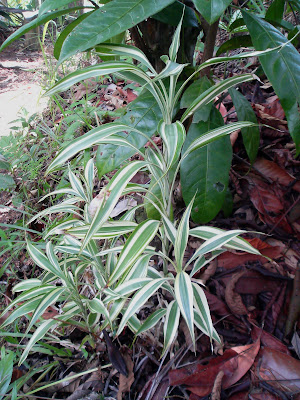
The flowers of the "Senduduk" ( Melastoma malabathricum) are an enchanting purple attraction and reminds me of the official colour of my first university i.e. the University of Pulau Pinang. Purple is the royal colour of the university. The Senduduk is also called the "Singapore Rhododendron". Over at our garden the Senduduk is everywhere . It is a pioneering species of plant and it is very difficult to "grow" them. They just appear anywhere, anyhow. They flower en masse and the fruits are a dark bluish black. I notice the birds dispersed them over the garden and chiefly among them is the Bulbul ( Pynconotus goiaver). I like to eat the fruits because they are sweet tasting but would leave a bluish mark on your tongue just as if you accidentally tinge your tongue with blue ink.

















